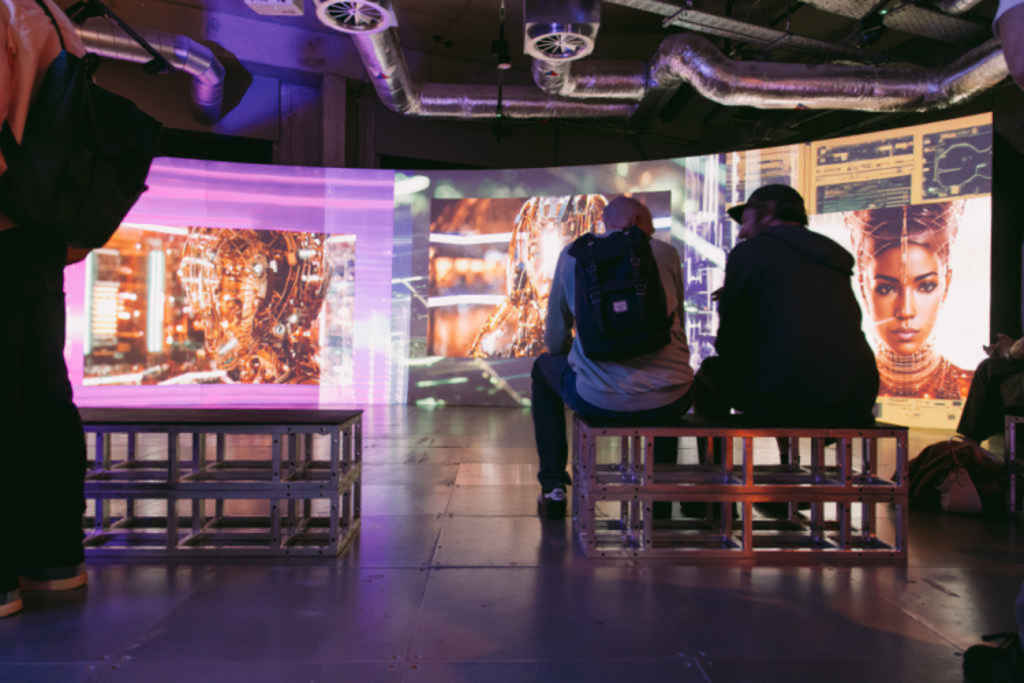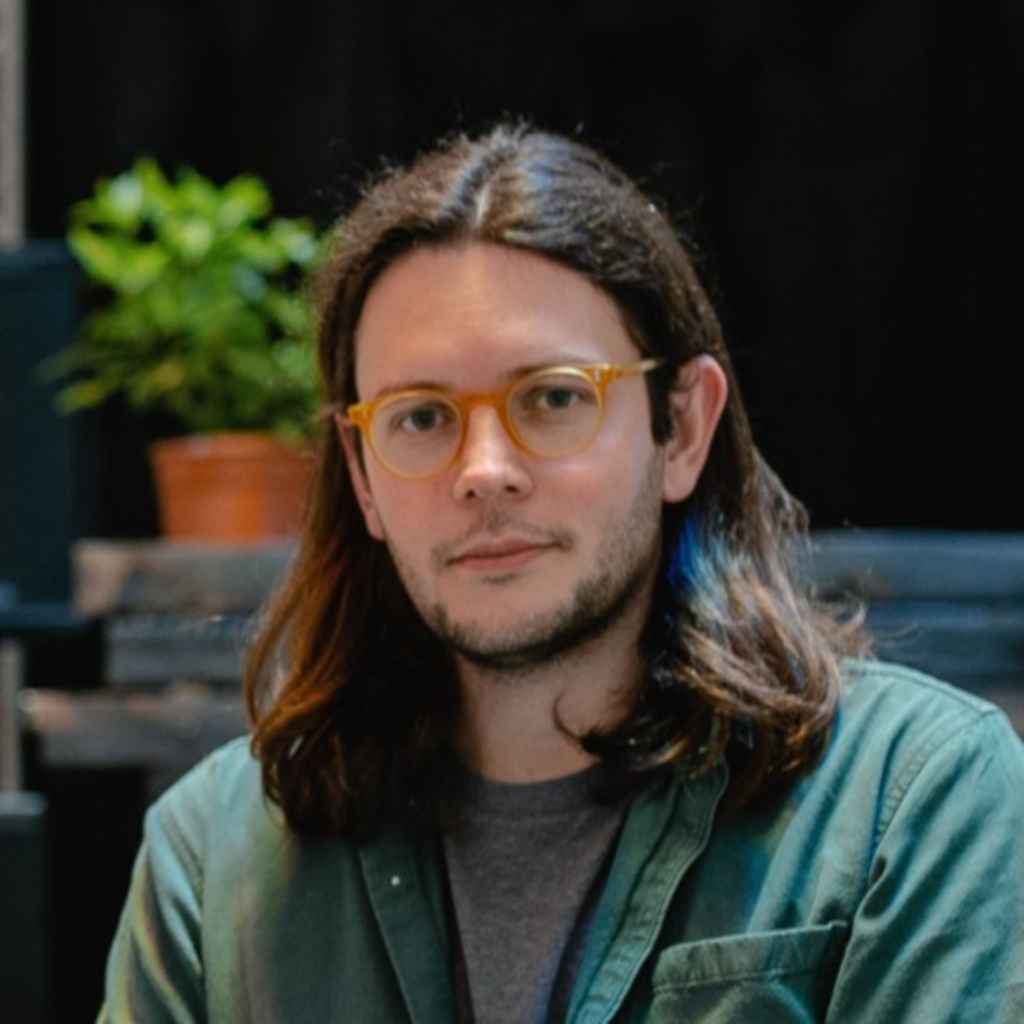Tom Millen’s goal is to see immersive projects recognised as its own segment in the wider art world. Paul Milligan finds out how.
caption: The "Elsewhere in India" project by Murthovic and Thiruda, at the arebyte Gallery
The Big Thing event, held in Bradford in the UK in June this year had an admirable aim. It was to bring together artists, creatives, researchers, and technologists from across the UK and beyond who want to shape the future of immersive art. The company behind the yearly event is interactive and immersive media specialist Crossover Labs. Initially setup to offer training and labs to connect people from the media world (TV, journalism, films) to people from the technology world in order to take advantage of the new opportunities for reaching audiences that Web 2.0 (Twitter, Instagram) was offering.
Out of that project came a need to show those projects to people, so Crossover started an annual exhibition at Sheffield Doc Fest, showing web documentaries and installation-based work. Tom Millen, director of Crossover Labs takes up the story: “After a few years of doing that, along came XR. We had our first VR installations in 2014, and it snowballed from there. Now we do curation for lots of different events around the world.”
So is part of Millen’s job to put technologists and creatives together? “Yes, but some of those technologists and creatives are the same person. In the early days of XR there were a lot of people who were both the director or artist of the piece and were also the developer. They had taught themselves how to code and were either coming from game or web development who had moved into the arts and media space, or they were doing it the other way around and were teaching themselves the technical skills required to do things.” Since budgets have grown for XR projects more specialised roles are now opening up within the industry he says. “There are way more production studios with the skills in-house, or people that have made the jump from video games and are now creating experiences because they’ve worked out how to talk to artists, which is quite a different language to speaking to game directors.”
Are we seeing the world of art and technology coming closer together, is that inevitable? For sure says Millen. “There will always be fine art skills and traditional art skills.
“Right now, we are moving towards a world where spatial computing is the medium of the 21st century. You can see the collision of all those worlds happening. Film and TV are using game engines for live production on shows such as The Mandalorian (filmed entirely using XR stages). You’ve got theatre makers using it in set designs and doing plays within games. You’re seeing dance, fine arts, sculpture, all of these things converging around this thing which is essentially a game engine. But it’s a much more powerful tool because it allows us to express ourselves spatially. Rather than people coalescing around hardware, people are actually coalescing around the software of spatial computing and the hardware is just the means by which we are able to see it.”

Millen revealed that a lot of XR projects used to be created using the Unity game engine, but the majority is now migrating to Unreal Engine and Touch Designer.
If art and technology are coming closer together, and it seems that way, does Millen think that’s simply reflecting our wider society, or are artists always looking for new ways to do things? “I think artists are interested in the challenges facing society, and so they’re drawn to the tools that society is really interested in.
The 20th century was defined by the film camera, whether that was in news but also in art and expression. Now in our current society everything exists on our mobile phones and we’re living in these alternate worlds full of avatars of versions of ourselves. We’re being surveilled and monitored, everything’s a data point. The best way to talk about those issues is through the technology itself. It’s hard to think of a way you could talk about those issues through just
a painting or a sculpture.”
When Crossover connects with artists and creatives, is it possible to entice them to use technology if they weren’t thinking about it in the first place? Or does it have to come from them? They have to be curious says Millen. “The challenge we face in this strange corner of the art/media world that we exist in is there aren’t actually loads of us right now. The problem is lots of people don’t see enough and what they do see is not the best stuff or is tucked away in festival programmes or in very particular gallery spaces. It’s very hard to find a business model for it at the moment, for some of the work it’s easier, like large scale projection at Outernet-style venues. That is a business model that works. But then when you’re doing crunchier, weirder stuff that maybe involves live actors and live music and all sorts of stuff going on, then it suddenly can become quite challenging quite quickly.”
The proliferation of immersive art experiences around the world, usually in the form of classic artworks blown up on large projection screens is hampering not helping immersive art says Millen. “People are seeing the Van Gogh stuff and they’re thinking that’s derivative, it’s not interesting, and there’s 20 of them touring around the world and they are saying no thank you. Part of our job is to evangelise about the possibilities of what this medium can offer, by trying to show artists another side, that there is really interesting stuff going on. It’s quite easy to pique curiosity when you show people some of the really brilliant work that is being created.”

Tom Millen
What started off as a small community of like-minded artists has now grown significantly, and The Big Thing reflects that says Millen. “This year we had over 550 attendees, so quite a growth from 30 people ten years ago. Now it’s 550 people who are interested in this very niche part of the arts, coming together to form collaborations and inspire one another and really get under the hood of what makes this art form powerful and unique. It’s really important to fight for those spaces.”
Outside of The Big Thing, Millen is also involved in the XRtists scheme (now just called Immersive Arts) a three-year national programme launched in February 2024, aimed at arts, cultural and performance organisations interested in blending physical and digital experiences. Funded by the Arts and Humanities Research Council (AHRC), Arts Council England, Creative Scotland, the Arts Council of Northern Ireland and the Arts Council of Wales, it supports UK artists to harness the potential of immersive technologies. The first round of funding was “very oversubscribed” says Millen, with the scheme receiving more than 2,500 applications. For the first year it has been able to fund 83 projects. “We didn’t anticipate quite the level of demand, but it gives us is a mandate to go to funders and say there’s a lot of people interested in this area that we need more support, and we need more investment,” says Millen. “Venues also need support to be able to show it to people and work out how you charge for it and make it a sustainable industry.”
Millen says we’ll see the first fruits of the Immersive Arts scheme later this year and into next year, with a second round of funding to be announced early next year. What would Millen like the scheme to have achieved when it ends in 2027? “When we changed the name we were really setting out the ambition of the programme, which is that by the summer of 2027 immersive art is recognised as an art form within itself, and not something that’s attached to other art forms i.e. I make films and XR or I make theatre and XR. So you can say you’re an immersive artist and you make immersive art. Having that recognition of immersive art as a medium in in the wider understanding, both public and within government, is the goal.”